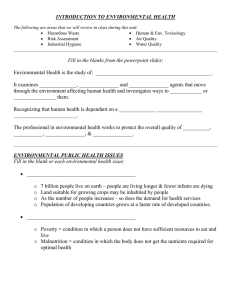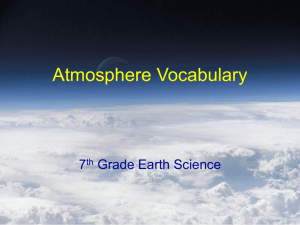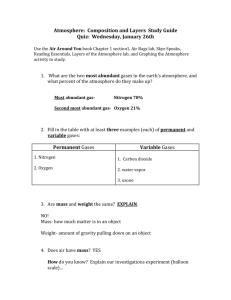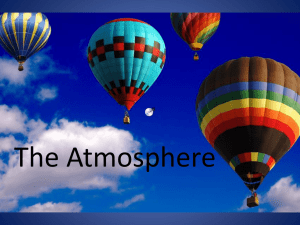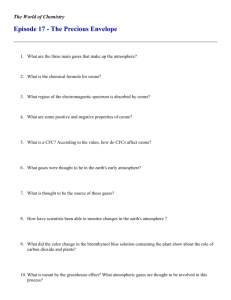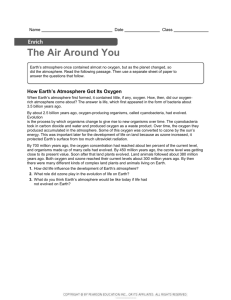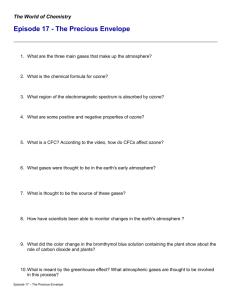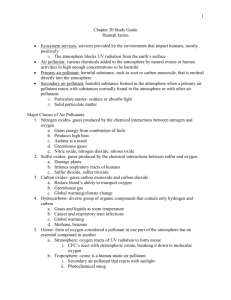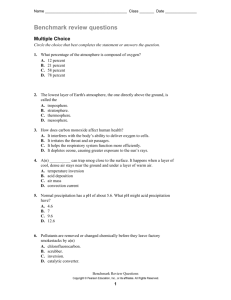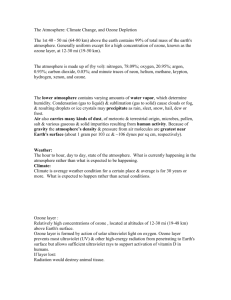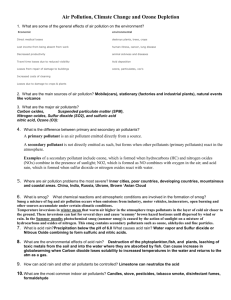Grade 6 Science Review Test Friday, 11/15 Definitions Smog: when
advertisement
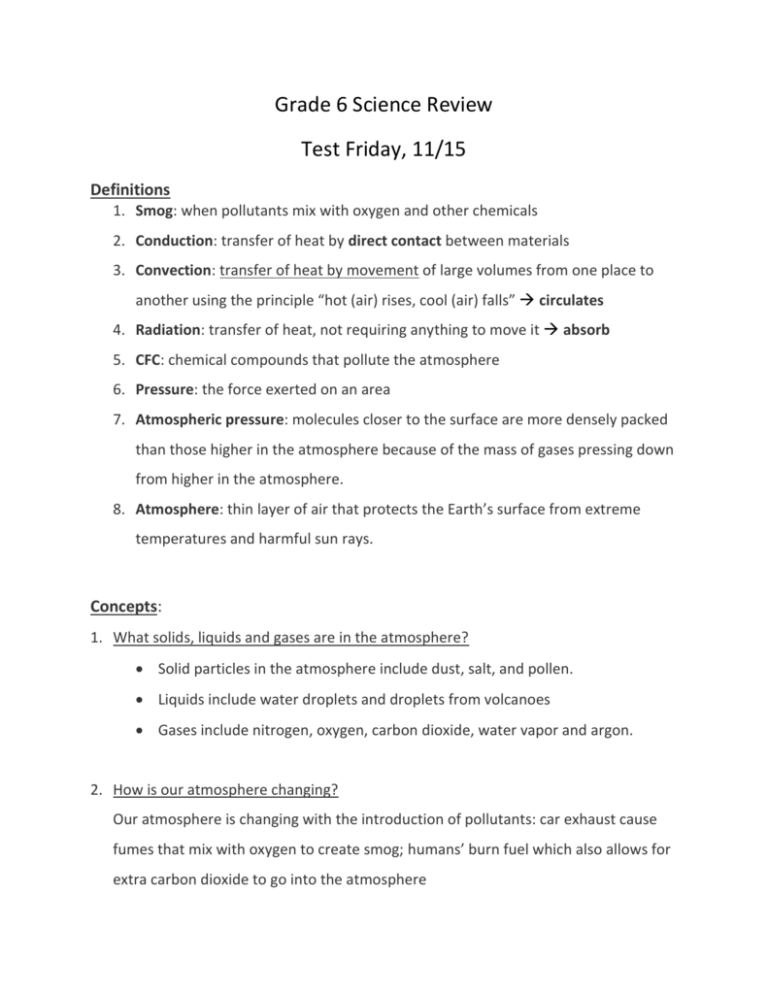
Grade 6 Science Review Test Friday, 11/15 Definitions 1. Smog: when pollutants mix with oxygen and other chemicals 2. Conduction: transfer of heat by direct contact between materials 3. Convection: transfer of heat by movement of large volumes from one place to another using the principle “hot (air) rises, cool (air) falls” circulates 4. Radiation: transfer of heat, not requiring anything to move it absorb 5. CFC: chemical compounds that pollute the atmosphere 6. Pressure: the force exerted on an area 7. Atmospheric pressure: molecules closer to the surface are more densely packed than those higher in the atmosphere because of the mass of gases pressing down from higher in the atmosphere. 8. Atmosphere: thin layer of air that protects the Earth’s surface from extreme temperatures and harmful sun rays. Concepts: 1. What solids, liquids and gases are in the atmosphere? Solid particles in the atmosphere include dust, salt, and pollen. Liquids include water droplets and droplets from volcanoes Gases include nitrogen, oxygen, carbon dioxide, water vapor and argon. 2. How is our atmosphere changing? Our atmosphere is changing with the introduction of pollutants: car exhaust cause fumes that mix with oxygen to create smog; humans’ burn fuel which also allows for extra carbon dioxide to go into the atmosphere 3. Does temperature decrease or increase with altitude within the layers? Temperature decreases as altitude increases in the troposphere. Temperatures increase as altitude increases in the stratosphere. Temperatures decrease with altitude in the mesosphere. 4. Identify methods of heat transfer (refer to worksheet) Example: blow dryer = convection, toaster = radiation or conduction, 5. CFC's what are they? harmful or helpful? CFCs (chlorofluorocarbons) are pollutants that are destroying the ozone layer, therefore they are harmful. They can also lead to global climate changes. 6. Where is the ozone layer? What are ozone holes? How are they caused? The ozone layer is above Earth in the Stratosphere and protects Earth from the sun’s harmful ultraviolent radiation. Ozone holes are a region of thinning of the ozone layer in high latitudes. The ozone layer has a large hole over Antarctica. Ozone holes are caused by CFCs 7. How is smog formed? Smog is formed when pollutants mix with oxygen and other chemicals 8. How did oxygen make up 21% of Earth’s atmosphere? 1. Early organisms released gases 2. Water vapor molecules 9. Why is hiking in the mountains harder to breathe? The air is thinner because there are less oxygen molecules
